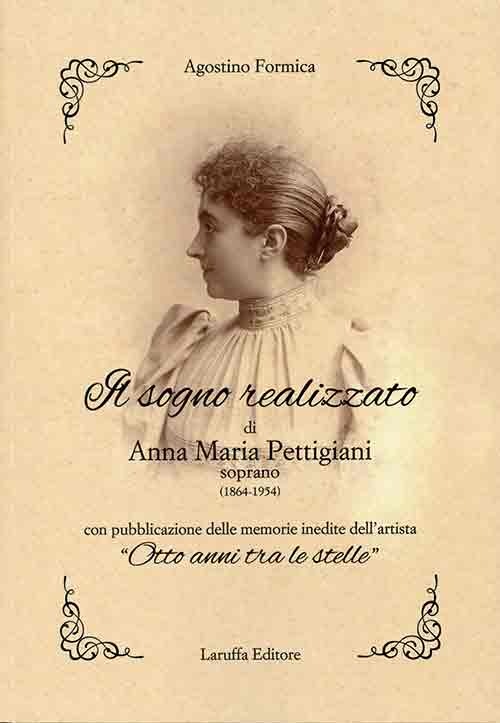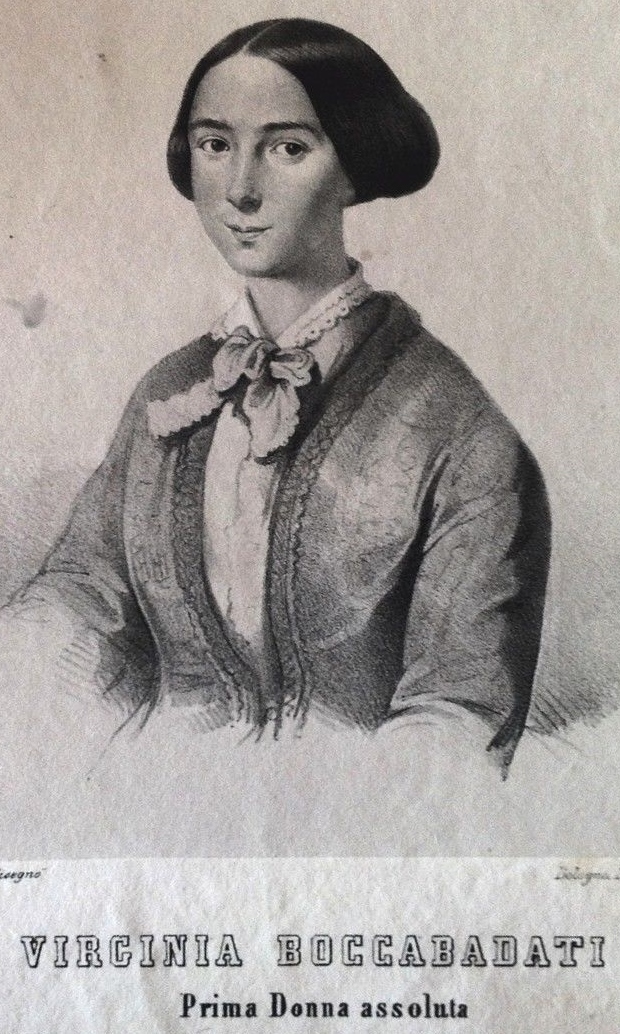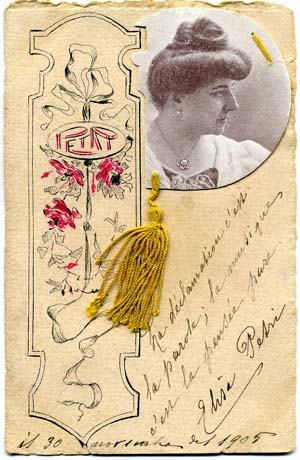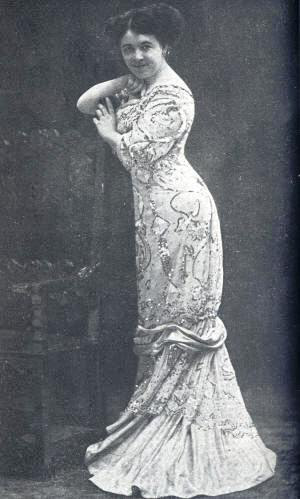
IL SOGNO REALIZZATO DI ANNA MARIA PETTIGIANI SOPRANO (1864-1954) con pubblicazione delle memorie inedite dell’artista “Otto anni tra le stelle” by Agostino Formica

ISBN 978-88-7221-750-4
Laruffa Editore 2015, 214pp, 25 Eur
www.laruffaeditore.it
Biographies of opera singers who didn’t leave any memento of their vocal art are often of less interest especially to the record collectors. This release may be different as it contains her own written memoirs –Otto anni tra le stelle -which shed an interesting light on the operatic world of the second half of the ottocento.
Pettigiani born in Milan in 1864 lived until the age of 90. She studied in Pesaro with the legendary Virginia Boccabadati (1828-1922) who was also the teacher of Maria Farneti, Elisa Petri and Celestina Boninsegna.


 (Boccabadati, Elisa Petri and Laura del Lungo)
(Boccabadati, Elisa Petri and Laura del Lungo)
Pettigiani made her stage debut in 1886 as Norina at Rome’s Nazionale and a career all over Italy, Europe and the two Americas followed in the next decade. After marrying Alfredo Pisano she quit her “breve meteora luminosa” career and became a singing teacher in Rome. She was 31. Amongst her future students were Laura Del Lungo and Augusta Oltrabella
The book starts off with an introductory note by Pettigiani’s great-granddaughter Giovanna Liccardi-Barreca. Pettigiani’s memoirs are preceded by biographical notes including the theatres and the roles she appeared in without neglecting her concert career and repertoire.
Pettigiani’s personal recollections consists of a chronological kaleidoscope of anecdotes from her years as a student until her retirement from the stage. The chapters include more than 8 pages on her teacher and her method. A description of the shark worlds of the artist agencies in Milan is followed by her fond reminiscences of such great luminaries as Antonio Cotogni, Francesco Marconi and Eleonora Duse. Pettigiani’s description of her Russian appearances opposite Angelo Masini (“Masini non prova mai”) in St. Petersburg (“Neve, neve null’altro”) and the reception of Masini (“idole delle folle russe”) upon arrival make fascinating reading. Her unmitigated statements on the voices of her colleagues and the performances she was involved in reminded me more than once of Sergej Levik’s Memoirs. Pettigiani doesn’t offer a boring ‘and I sang with’ enumeration ; on the contrary her eye witness accounts of the people she met and worked with offer in-depth comments and observations of great interest.
Her ‘otto anni tra le stelle’ thus include a series of memories of Virginia Ferni Germano, Félia Litvinne, Helene Hastreiter, De Negri, Francesco Tamagno, Emma Albani (non un grande artista), Guerrine Fabbri (non ho mai conosciuto una donna più simpaticamente e constamente gaia), Stagno and Bellincioni, Antonio Scotti, Michele Mariacher, Adalgisa Gabbi (bella figura ma interprete mediocre), Marie Van Zandt (la mia croce), Nellie Melba, Sigrid Arnoldson, Jean De Reszke (voce non molto gradevole), Lilli Lehmann (on her husband Paul Kalish : non capiva assolutamente nulla di quanto doveva fare), Adèle Gini Pizzorni and Adelina Patti to name but a few of the singers. Non-singing celebrities who get a lot of attention are the conductor Leopoldo Mugnone, “L’Ebreo Strakosch l’impressario delle stele” and manager Maurice Grau.
Three appendices are included. The first contains a selection of reviews of her performances. The second ‘unnecessary’ one consists of biographical sketches of the names quoted in Pettigiani’s memoirs. A “repertorio fotografico” concludes the book as a name index is regrettably missing though an alphabetical repertory list is included on page 41.
Rudi van den Bulck